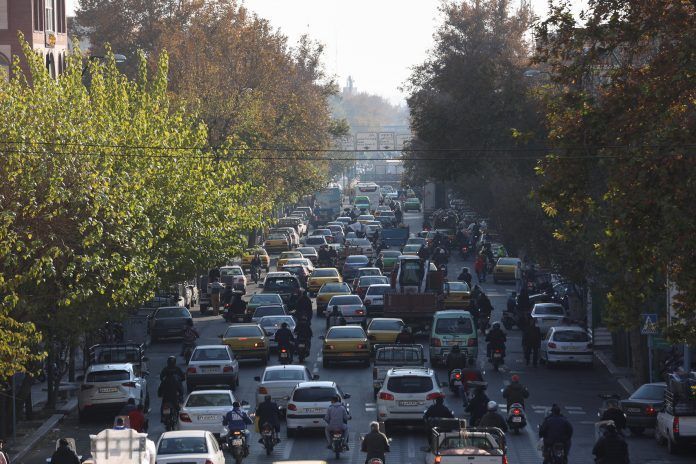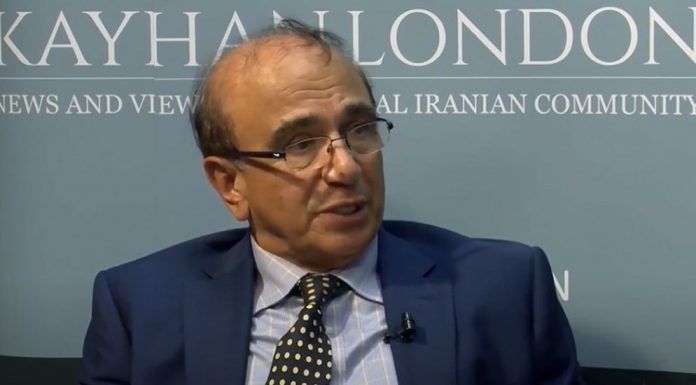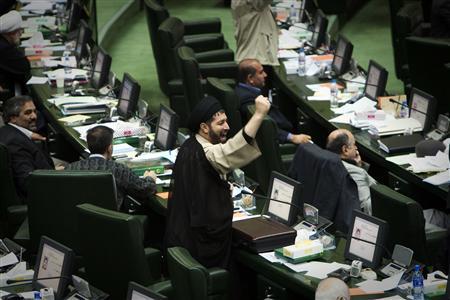
By Kayhan Life Staff
Iranian President Ebrahim Raisi submitted his government’s 2022-23 proposed budget bill to the Majlis (Iranian Parliament) on Dec. 12.
Mr. Raisi and his cabinet have projected that the 3.631 quadrillion tomans ($121 billion, using the daily market exchange rate of 300,000 rials per dollar) would correspond to 8 percent economic growth. However, many economists argue that the current “unrealistic” budget bill will only worsen the economic crisis in the country.
The following is a detailed analysis of the government’s 2022-23 budget bill by prominent Iranian economist Dr. Hassan Mansour.
The government has drafted its 2022-23 budget bill on the overoptimistic assumption that the economy will grow despite the sanctions and tough current conditions.
The unrealistic economic projections and arbitrary line items in the budget reflect fears and the desperate attempt by the authorities to solve the economic crisis that has plagued the nation for years and threatened the livelihood of a large segment of the population.
A review of the budget may reveal the mindset of its authors and clarify some of the ambiguous underlying social issues.
To avoid any confusion and for the sake of simplicity, we will round up some figures and use standard industry terms such as “sale of capital assets and commitment to implement capital projects.”
A budget bill is the government’s proposed annual “financial roadmap,” projecting a country’s revenue from various sources and its spending. A country’s annual income should cover its spending and make up for any deficit from the previous year to prevent the budget from causing inflation and recession.
The government’s proposed 2022-23 budget bill is like a big head on a tiny body. It will worsen economic conditions for a large segment of the Iranian population.
Even if inflation stays at the optimistic rate of 45 percent, the GDP at the start of the Iranian new year 1401 (starting on March 21) will be $154.6 billion. The government’s 2022-23 budget bill will be 65 percent of GDP.
Increasing the government budget’s share of the GDP is a bad sign. It shows that those who have drafted the budget have predicted that the private sector’s contribution to the economy will shrink in the coming year or the inflation rate will rise above 45 percent.
Such a massive budget is detrimental to the public’s welfare, even if competent and well-meaning governments were to manage it.
The money needed to govern the country’s (general budget) forms 40 percent of the state budget. Historically, the government’s overall budget consists of the general budget, which is approximately $50 billion and used to run the country, and nearly $75 billion given to companies, banks, and for-profit government-owned institutions.
The budget allocated to companies, banks, and for-profit government-owned institutions is the state’s “dark box,” which helps maintain the government and is one and a half times the general budget. The Majlis and the Supreme Audit Court of Iran (SAC) do not have the power and authority to monitor this budget — a fact that makes a mockery of the country’s financial system.
If the state is not obligated to explain two-thirds of the country’s budget to the Majlis, why does it need to provide detailed figures and the line items for the other third?
The government’s projected budget deficit is the third of its total amount.
The current government budget is $10 billion in deficit. The proposed 2022-23 budget bill projects $221.5 billion in revenue and $332 billion in spending. According to the proposed budget bill, the surplus from the sale of capital assets and commitment to implement capital planning would be around $5.2 billion, and the surplus from the excess debt capacity (debt financing) to repay the debt would be close to $4.8 billion — together they will make up for the deficit.
Will the country generate the revenue projected by the proposed budget bill?
According to the proposed budget bill, the tax revenue will increase from the current $8.2 billion to $17.5 billion next year, showing a 125 percent raise, which will in real terms be around 50 percent. It is next to impossible to collect this much tax, given the current rate of inflation and actual taxes collected in previous years.
According to table-2 of the 2022-23 budget bill, the sale of capital assets, monitored by the government, will increase from the current $1 billion to $2.9 billion. Given the government’s record, this is an overoptimistic and unreliable projection — table-3 projects $12.7 billion in oil revenue and from the sale of petroleum products. However, the oil export depends on the outcome of talks on reviving the 2015 Joint Comprehensive Plan of Action (JCPOA), better known as the Iran nuclear deal.
There are also serious doubts about the projected spending figures of $9.3 billion. It will not be enough to make up for the rising inflation and cover the salaries of government employees and meet some demands of various segments of the population, including teachers and workers. Therefore, the deficit resulting from the actual revenue and spending will be much greater than the projected $10 billion.
The average inflation for most goods is currently between 45 percent and 65 percent for food products. The proposed 2022-23 budget bill will continue to raise inflation.
Increasing the official government foreign exchange rate-proposed by the budget bill-from 11,000 tomans to a U.S. dollar to 23,000 tomans will establish the base exchange rate of the dollar in the country’s economic structure and will cause massive and pervasive inflation in the Iranian economy.
Eliminating the government’s special foreign exchange rate of 4,200 tomans to a dollar will increase the cost of imported goods and strengthen both the “demand-pull inflation” and “expected inflation.” The government cannot maintain its baseline value of the rial if it injects subsidies into the economy to counter the rising price of affected goods.
[Demand-pull inflation occurs when the aggregate demand becomes more than the aggregate supply in the economy. Expected inflation refers to the rate at which people, consumers, businesses, and investors expect prices to rise in the future.]
Commercial banks would go further into debt with the Islamic Republic of Iran Central Bank if they gave money to the government, which is the same thing as borrowing money from the Central Bank. It will increase the money supply and inflation.
Borrowing a massive $4.5 billion (submission of national assets as provided by the National Development Fund of Iran, and listed in table-4 [of the 2022-23 budget bill]) will have the same effect on raising inflation and money supply as borrowing from the Central Bank.
The Islamic Republic has never had a coherent foreign exchange policy. It has based the foreign exchange rate on the government budget’s needs for the rial rather than its balance of trade. Besides this ineffective policy, the state has accommodated special interest groups by introducing several foreign exchange rates. These vastly different rates, including the daily market exchange rate, have led to rampant corruption and given special interest groups undue influence on the country’s policy-making process.
It is next to impossible to control the foreign exchange market, given the different exchange rates. The lack of a stable foreign exchange market makes controlling the exchange rate a bureaucratic challenge that is susceptible to corruption and is ultimately unsustainable.
Iranian financial system faces massive problems given that it uses several foreign exchange rates for various forms of energy in the country and abroad, and the Central Bank decides how much money (rial) to print based on the oil revenue, which is in the dollar. Iran does not practice “sterilization techniques,” a tool used by the central banks of developed nations to regulate their respective national tender, based on the amount of foreign currency leaving and entering their countries. As a result, the Iranian rial loses its value against foreign currencies.
[Sterilization is a form of monetary action in which a central bank seeks to limit the effect of inflows and outflows of capital on the money supply. Sterilization most frequently involves the purchase or sale of financial assets by a central bank and is designed to offset the effect of foreign exchange intervention.]
Another problem that plagues the Iranian financial system and the broader economy is what the Central Bank has done many times, namely printing money based on the foreign currency it has not received. These are frozen funds in foreign banks which Iran cannot access because of sanctions. Frozen money is “surplus foreign currency,” increasing the money supply and raising the price of goods even before it reaches the Iranian Central Bank and importers.
Therefore, the national currency will continue to lose value, given the current situation.
The government’s 2022-23 proposed budget bill will push more people into poverty.
Under the current (2021-2022) budget, some 60 million people of the country’s 84 million population need financial help from the government to make ends meet.
The inflation rate of 45 percent will push more people into poverty and undermine social stability. While stipulating the serious inflationary trend in the Iranian economy, the government’s 2022-23 budget bill limits salary increases for all employees to 10 percent, making life extremely challenging for most people in the country.
The proposed budget bill increases the cost of living for average Iranians and limits or removes many safety nets for them completely. Some of these measures include:
- Imposing a 20 percent tax on gasoline and petroleum products
- Collecting $5 billion in value-added tax (VAT), which will affect the poor more than the wealthy
- Increasing export tariffs
- Raising the full retirement age by two year
- Raising the price of each mobile phone text
- Imposing a 5 percent surcharge for water usage above the allocated volume
- Increasing fine for traffic violations by 5 percent
- Directing the Ministry of Culture and Islamic Guidance to impose a 10 percent tax on distributors of foreign video games for computers, mobile phones, and consoles
Increasing gasoline prices to make up for the continued devaluation of the rial is a policy of “chasing shadows” because as the price of gasoline has tripled, the exchange rate has also risen from 30,000 rials to a dollar to 300,000 to a dollar.
The government budget bill proposes a massive increase for the police, security forces, and military funding.
It calls for raising the budgets for the Supreme National Security Council by 70 percent and gives the Ministry of Defense and Armed Forces Logistics additional funding. It also calls for increasing the budgets of:
-
- The Ministry of Intelligence by 82 percent (currently $500 million)
- The Joint Staff of the Law Enforcement Forces (NAJA) by 51 percent (currently $1.5 billion)
- The Joint Staff of the Islamic Republic of Iran Army (SEMAJA) by 69 percent (currently $1.2 billion)
- The Islamic Revolutionary Guards Corps (IRGC) by 143 percent
The IRGC also receives nearly 5 billion euros from the oil revenue. Its engineering wing, Khatam al-Anbiya’s budget will rise by 165 percent (currently $25 million), and the budget of the Ministry of Information and Communications Technology (Ministry of ICT) will go up by 251 percent (currently $466 million.)
Although the Ministry of Culture and Islamic Guidance has a dedicated budget of $18 billion, additional funds are allocated to many other organizations and institutions that promote Islamic doctrines and ideologies. They include:
- The Supreme Council of Seminaries with a budget of $57.3 million
- The Management and Planning Council of Khorasan Seminaries $5.6 million
- Seminaries Service Center [which supports seminary students and pays for their insurance] $94 million
- Coordination Council for Promoting Islam $17.8 million
- The Policy Council of Women’s Religious Seminaries
- The Supreme Culture of Islamic Revolution $15.3 million
- The Islamic Republic of Iran Broadcasting (IRIB) $176.3 million
Promoting Islamic ideology is not limited to these institutions. Other ministries, government organizations, and departments receive funds to propagate Islamic doctrine.
The Budget and Planning Organization allocates $2.1 million to encourage dialogues on the Islamic Revolutions and $484 thousand to religious research.
The Armed Forces Joint Political and Ideological Organization allocates $3.6 million to cultural and ideological programs and $19.1 million to introduce Islamic culture.
The Ministry of Science and Technology allocates $2.2 million to the religious, social, and cultural education of student Baijis, $10.6 million to the strategic implementation of religious articles, and $534,000 to religious research.
The Ministry of Cultural Heritage, Handicraft, and Tourism spends $3.1 million on religious research.
While the government’s 2022-23 budget bill allocates nearly $667 million to religious propaganda, and $7.6 billion to the police, security, and military forces, it only gives Tehran University $34 million and the Department of Environment a mere $72 million.
The proposed 10 percent cap on salary increases will force a large segment of the population into poverty, given that the inflation rate will most likely rise above 50 percent.
Meanwhile, some officials in the executive branch reportedly receive $10,000 a month in salary, and 1,300 others get around $1,700 a month.
[aesop_image img=”https://kayhanlife.com/wp-content/uploads/2021/12/2021-11-12T000000Z_335186468_MT1NURPHO000JDO3NF_RTRMADP_3_IRAN-DAILY-scaled.jpg” panorama=”off” credit=”FILE PHOTO/REUTERS./ ” align=”center” lightbox=”on” captionsrc=”custom” caption=”An Iranian man holds a cigarette as he sits in his vehicle in downtown Tehran, amid the COVID-19 outbreak in Iran, November 12, 2021. ” captionposition=”left” revealfx=”off” overlay_revealfx=”off”]




Even if inflation stays at the optimistic rate of 45 percent, the GDP at the start of the Iranian new year 1401 (starting on March 21) will be $154.6 billion. The government’s 2022-23 budget bill will be 65 percent of GDP.
It would be appreciated, if you could explain the above sentence.